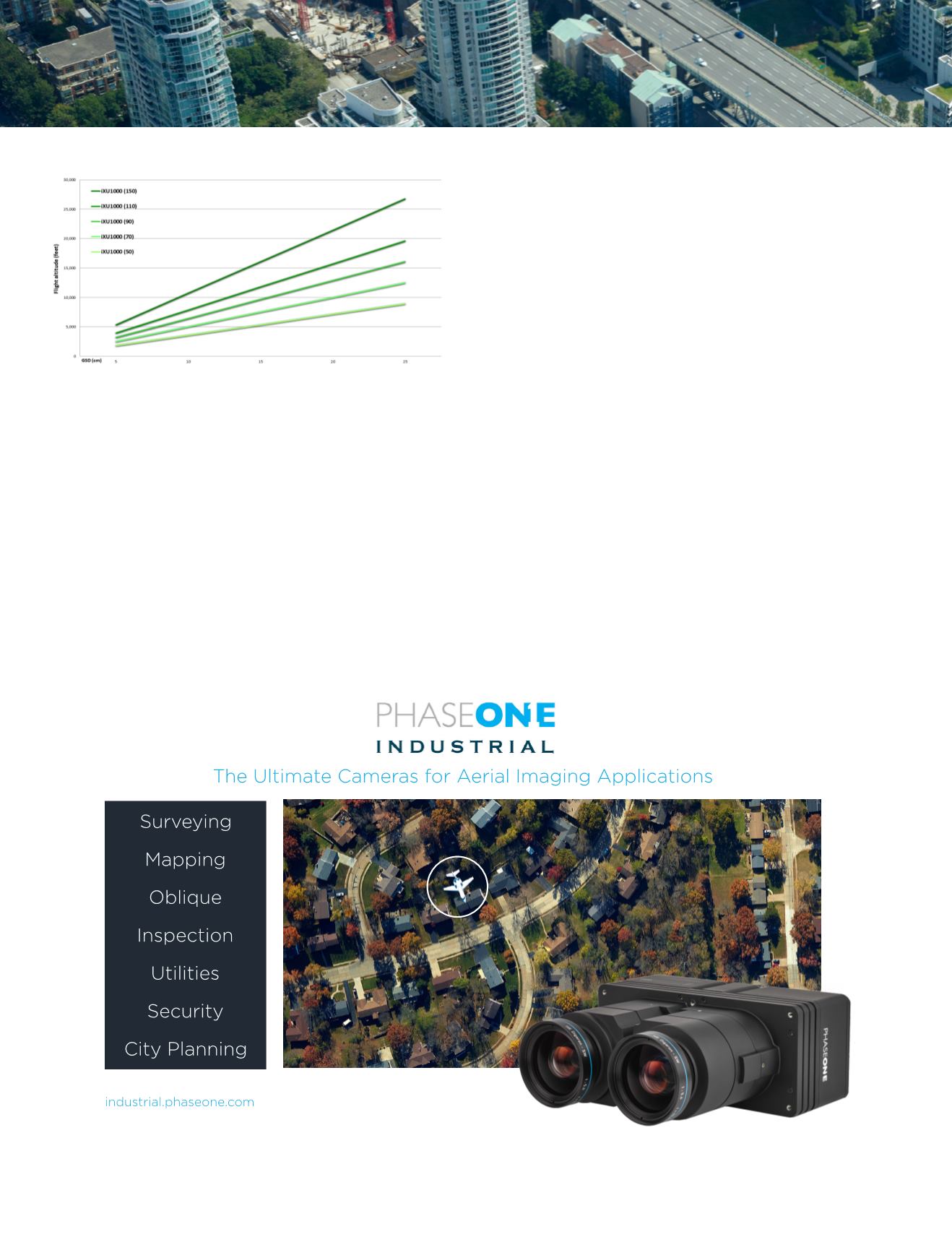
238
May 2018
PHOTOGRAMMETRIC ENGINEERING & REMOTE SENSING
Conclusion
The last generation of Phase One medium format metric
cameras with small pixel size (4.6 µ), large sensor area (100
Mpix), maximal frame-per-second (FPS) rate of 1.6 and ex-
posure time of up to 1/2500 seconds, a set of metric lenses
with different focal lengths (50, 70, 90, 110, 150 mm) and
with relatively low price, provide an excellent alternative to
large format cameras in many areas of aerial mapping and
monitoring.
Figure 6. Flight altitudes with the wide range of Phase One metric
lenses.
Additionally, these cameras are widely used for providing
an oblique imagery and as a complementary camera for li-
dar systems. All these cameras, from oblique and from lidar
systems, may be used as standalone cameras for mapping
projects.
The very low weight (2 kg) and small size of the cameras en-
able their utilization with super-light planes, small helicop-
ters, gyrocopters and UAVs, which can significantly reduce
operational cost of mapping projects.
The Phase One cameras present an effective alternative to
large format cameras for small and medium size urban and
rural mapping projects, corridor mapping, oblique projects,
and monitoring of areal and linear infrastructure.
Reference
Raizman, Y., 2012, Leaning Instead of Overlap – Flight
Planning and Orthophotos, GIM International, June, pp.
35-38.


